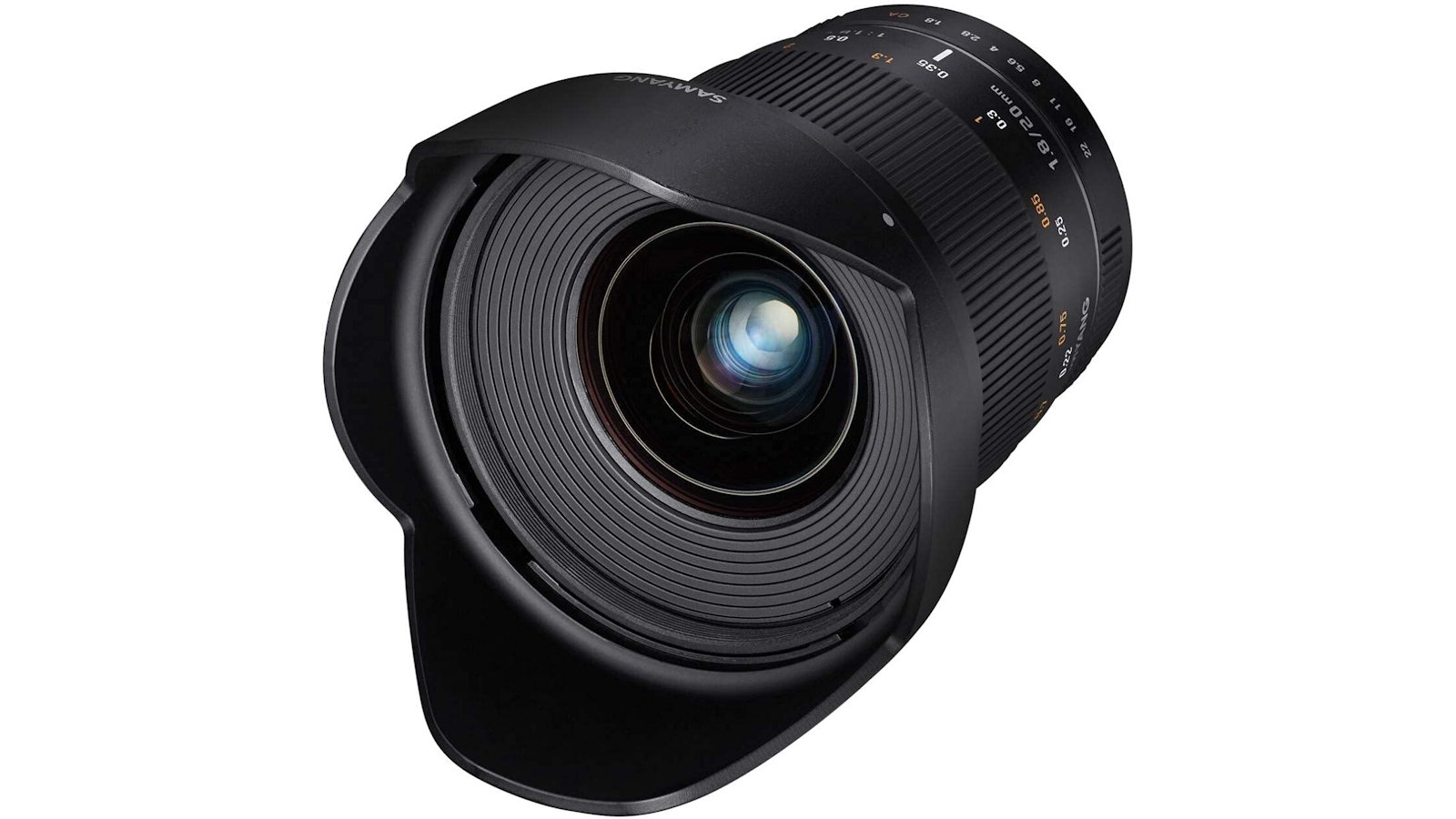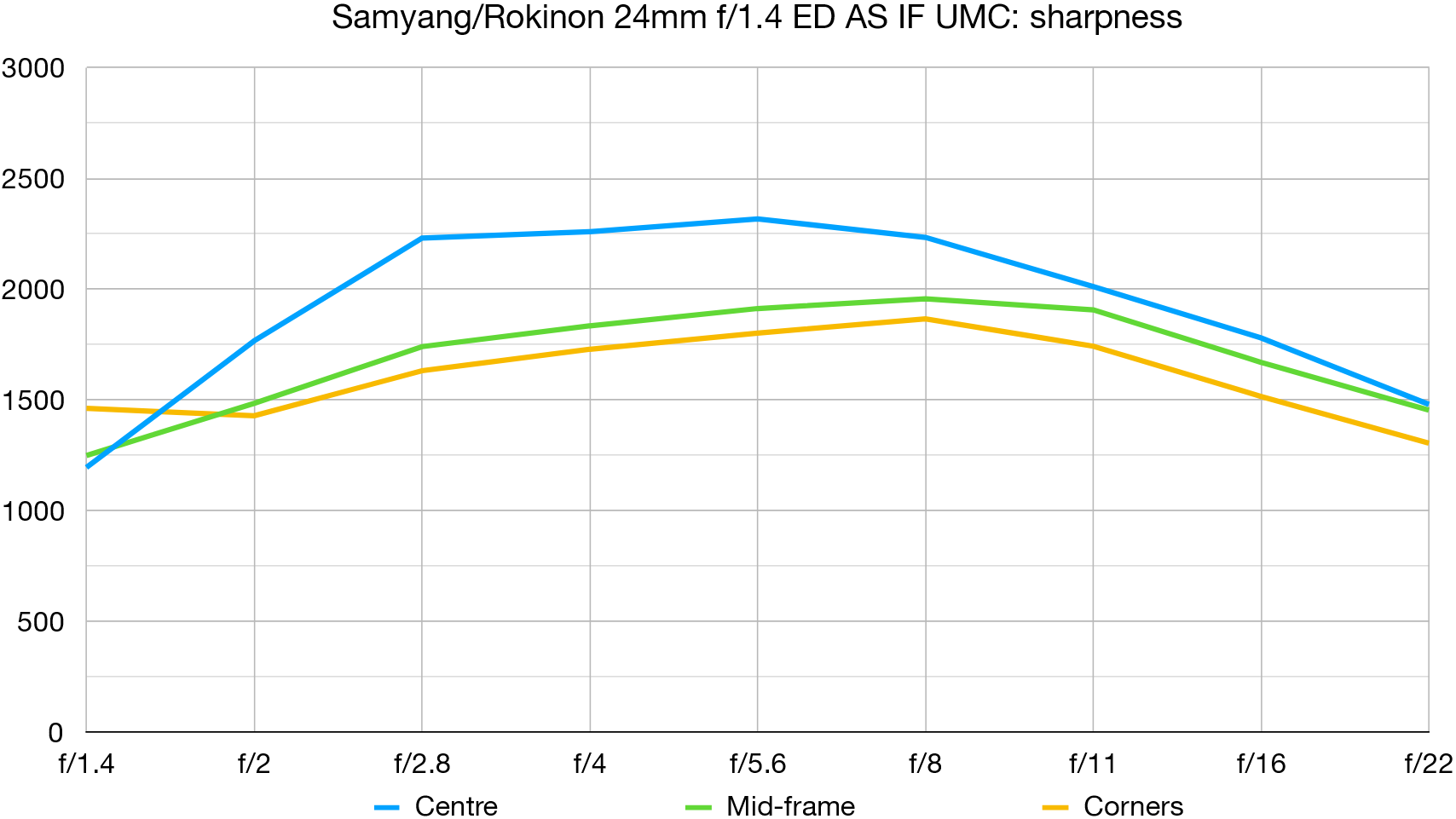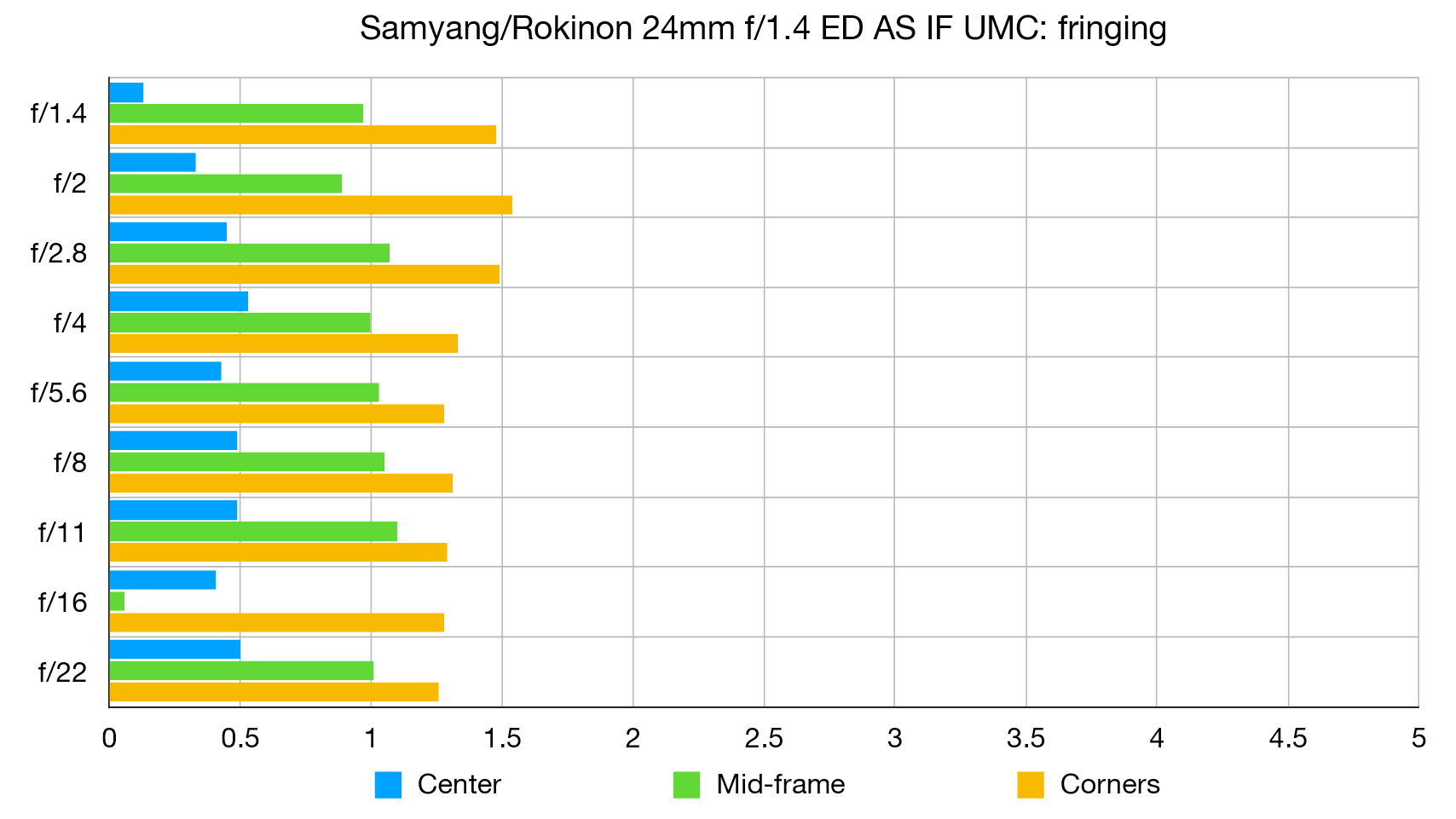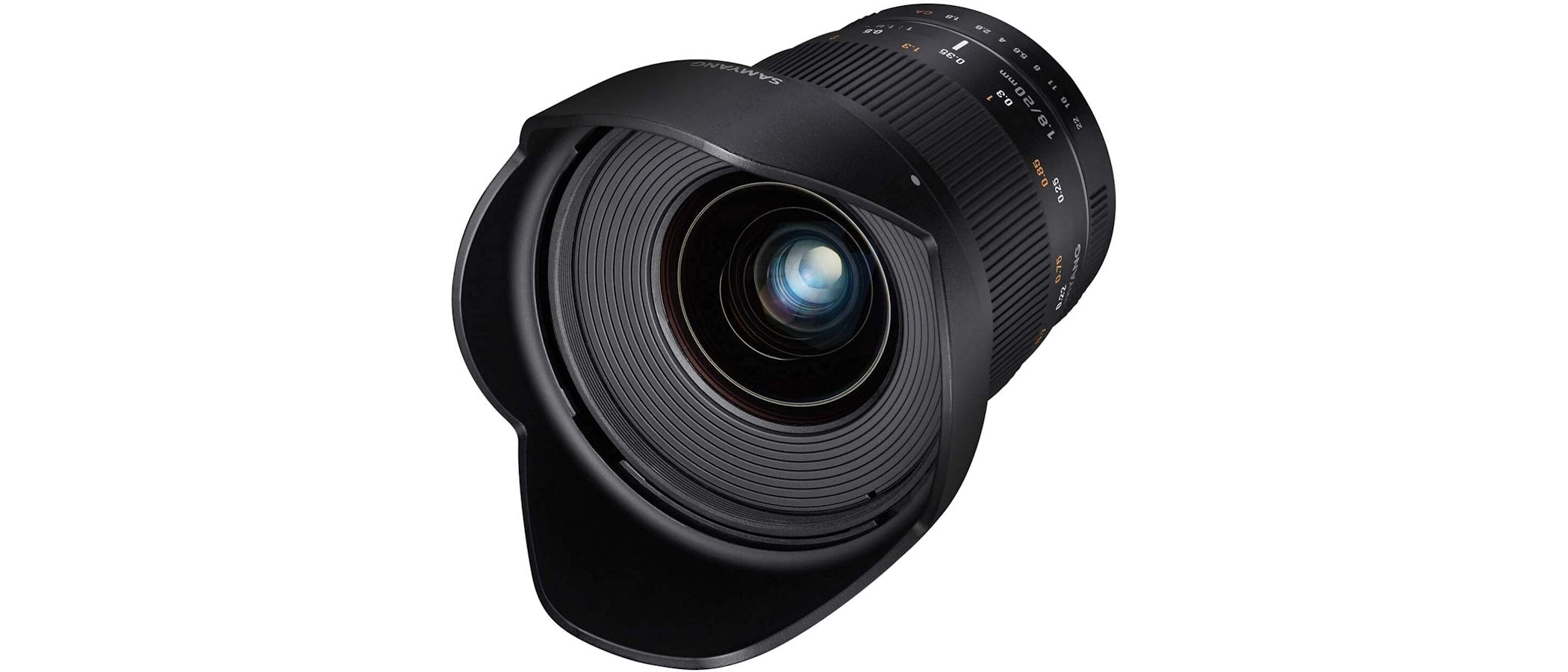Digital Camera World Verdict
Badged Samyang and Rokinon in different world regions, this manual-focus lens gives the classic wide viewing angle of a 24mm lens on full-frame camera, while being similar to using a 35mm or 50mm lens on APS-C format and Micro Four Thirds bodies respectively. In all cases, the fast f/1.4 aperture is welcome. Handling and image quality are very good but only the Nikon F-mount version of the lens has built-in electronics, enabling the full range of PASM shooting modes.
Pros
- +
Many different mount options
- +
Solid build quality
- +
Smooth-action manual focusing
Cons
- -
Manual focus only
- -
No communication with most cameras
- -
No weather-seals
Why you can trust Digital Camera World
The Samyang/Rokinon 24mm f/1.4 ED AS IF UMC isn’t overly big or heavy for its focal length and fast aperture combination. However, there’s quite a spread of physical lengths and weights, depending on mount option, the range being many and varied. The full list includes Canon EF/EF-M, Fuji X, MFT, Nikon F, Pentax K, Samsung NX, Sony A/E, catering to both full-frame and crop-sensor cameras.
Specifications
Mount: Canon EF/EF-M, Fuji X, MFT, Nikon F, Pentax K, Samsung NX, Sony A/E
Full-frame: Yes (mount dependent)
Autofocus: No
Stabilization: No
Lens construction: 13 elements in 12 groups
Angle of view: 84 degrees (full-frame)
Diaphragm blades: 8
Minimum aperture: f/22
Minimum focusing distance: 0.25m
Maximum magnification ratio: Unspecified
Filter size: 77mm
Dimensions: 83x98-124mm (mount dependent)
Weight: 565-630g (mount dependent)
Key features
Although available in many different mount options, only the Nikon F-mount has a built-in processor and electronic communication to the host camera. This allows you to shoot in the whole range of PASM modes without any restriction, as the aperture can be adjusted and controlled from the camera body. It also allows for lens-based EXIF data to be stored in images. For other mount options, the Samyang is basically a ‘dumb lens’ and you can only control the aperture from the onboard control ring. This rules out Program AE and Shutter-priority shooting modes, as well as giving a dark viewfinder image at narrow apertures when using a DSLR.
One thing common to all mount options of the lens is that there’s no autofocus. As with most manual-focus lenses, however, the focus control ring operates smoothly and with a long throw, enabling very fine and precise adjustments. Another plus point for the Nikon F-mount version is that the electronics enable focus assist and confirmation lamps in the viewfinder of DSLRs.
The high-grade optical path includes two aspherical elements and four ED (Extra-low Dispersion) elements. Ultra Multi Coating is applied to minimize ghosting and flare, along with a bayonet-fit petal shaped hood. The lens has a 77mm filter attachment thread and the front element doesn’t rotate during focusing, ensuring easy use of circular polarizer and ND grad filters.

Performance
Accurate viewfinder-based manual focusing can be difficulty on DSLRs, which lack a focus peaking aid. The lens gives a helping hand in the shape of a focus distance scale with depth of field markers for apertures of f/4, f/8, f/16 and f/22. Outright sharpness is a bit disappointing when shooting wide-open but soon gets into its stride when stopping down a little.
Lab results
We run a range of lab tests under controlled conditions, using the Imatest Master testing suite. Photos of test charts are taken across the range of apertures and zooms (where available), then analyzed for sharpness, distortion and chromatic aberrations.
We use Imatest SFR (spatial frequency response) charts and analysis software to plot lens resolution at the center of the image frame, corners and mid-point distances, across the range of aperture settings and, with zoom lenses, at four different focal lengths. The tests also measure distortion and color fringing (chromatic aberration).
Sharpness:

Levels of sharpness are excellent at apertures of between f/2.8 and f/16, but drop off noticeably when shooting wide-open at f/1.4.
Fringing:

There’s only fairly minimal color fringing towards the edges and corners of the image frame, throughout the entire aperture range.
Distortion: -2.21
The lens produces noticeable barrel distortion but it’s of a uniform nature and easy to correct when editing, if necessary.
Verdict
Badged Samyang and Rokinon in different world regions, this manual-focus lens gives the classic wide viewing angle of a 24mm lens on full-frame camera, while being similar to using a 35mm or 50mm lens on APS-C format and Micro Four Thirds bodies respectively. In all cases, the fast f/1.4 aperture is welcome. Handling and image quality are very good but only the Nikon F-mount version of the lens has built-in electronics, enabling the full range of PASM shooting modes.
Read more:
• Best camera lenses to get
• Best Canon lenses
• Best Nikon lenses
• Best Sony lenses
Matthew Richards is a photographer and journalist who has spent years using and reviewing all manner of photo gear. He is Digital Camera World's principal lens reviewer – and has tested more primes and zooms than most people have had hot dinners!
His expertise with equipment doesn’t end there, though. He is also an encyclopedia when it comes to all manner of cameras, camera holsters and bags, flashguns, tripods and heads, printers, papers and inks, and just about anything imaging-related.
In an earlier life he was a broadcast engineer at the BBC, as well as a former editor of PC Guide.


